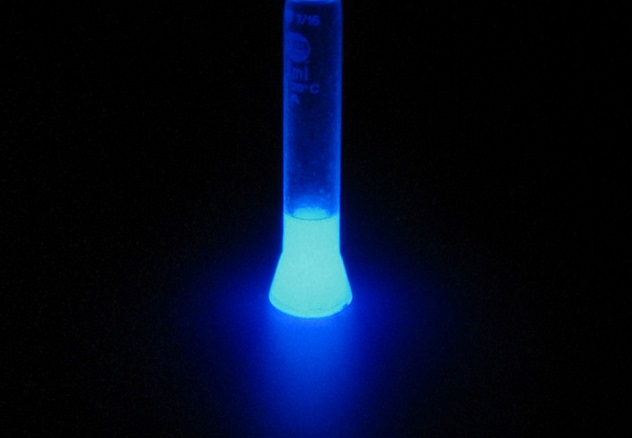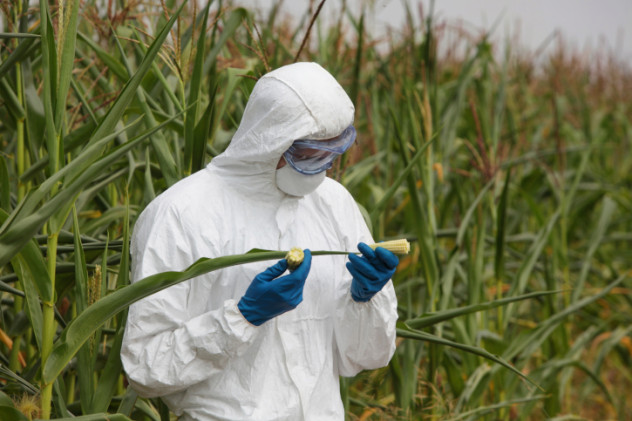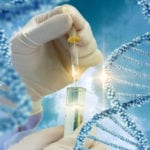 Miscellaneous
Miscellaneous  Miscellaneous
Miscellaneous  Our World
Our World 10 Green Practices That Actually Make a Difference
 Humans
Humans Ten Historic Men Who Deserve Way More Credit Than They Got
 Movies and TV
Movies and TV The 10 Most Heartwarming Moments in Pixar Films
 Travel
Travel Top 10 Religious Architectural Marvels
 Creepy
Creepy 10 Haunted Places in Alabama
 History
History Top 10 Tragic Facts about England’s 9 Days Queen
 Food
Food 10 Weird Foods Inspired by Your Favorite Movies
 Religion
Religion 10 Mind-Blowing Claims and Messages Hidden in the Bible Code
 Facts
Facts 10 Things You Never Knew about the History of Gambling
 Miscellaneous
Miscellaneous Ten Groundbreaking Tattoos with Fascinating Backstories
 Our World
Our World 10 Green Practices That Actually Make a Difference
 Humans
Humans Ten Historic Men Who Deserve Way More Credit Than They Got
Who's Behind Listverse?

Jamie Frater
Head Editor
Jamie founded Listverse due to an insatiable desire to share fascinating, obscure, and bizarre facts. He has been a guest speaker on numerous national radio and television stations and is a five time published author.
More About Us Movies and TV
Movies and TV The 10 Most Heartwarming Moments in Pixar Films
 Travel
Travel Top 10 Religious Architectural Marvels
 Creepy
Creepy 10 Haunted Places in Alabama
 History
History Top 10 Tragic Facts about England’s 9 Days Queen
 Food
Food 10 Weird Foods Inspired by Your Favorite Movies
 Religion
Religion 10 Mind-Blowing Claims and Messages Hidden in the Bible Code
 Facts
Facts 10 Things You Never Knew about the History of Gambling
10 Fascinating Facts About Forensics
You probably already know that popular depictions of forensics are wildly inaccurate, and it’s true that most crime scene investigators have a lot more paperwork and a lot fewer gunfights. In the effort to bring our expectations back down to earth, though, most myth-busters have overlooked the fact that forensics is still really, really cool.
10Luminol

While TV shows like Bones and CSI often rely on unrealistically advanced technology to the chagrin of real crime scene investigators, there is one substance that is exactly as futuristic as it’s depicted: luminol.
Luminol is a powder made up of oxygen, nitrogen, hydrogen, and carbon that glows blue when it comes into contact with the hemoglobins in blood. This chemiluminescence is the same process that causes fireflies to glow. Luminol can detect minute amounts of blood even after an area has been washed, even years later. The glow only lasts about 30 seconds but can be captured with long-exposure photography.
It is often used as a last resort, since the chemical reaction can destroy the very evidence it reveals, but it can still prove incredibly useful. For example, it might reveal an assailant’s shoe prints or show investigators where to look more closely. Blood on carpet that may be invisible to the naked eye can be revealed, prompting investigators to look for much larger, visible stains in the wood beneath. Those working with luminol must be wary of false positives, however, as it also reacts to the presence of urine, copper, and horseradish sauce.
If you’ve ever been interested in learning the secrets of forensic investigators, you’ll love the hands-on approach of Howdunit Forensics at Amazon.com!
9The Washing Away Of Wrongs

The first known book on forensics was alternately titled Collected Cases of Injustice Rectified or The Washing Away of Wrongs. It was written in the 13th century by a highly conscientious Chinese judge named Song Ci. He laid down strict regulations to ensure that coroners would not be corrupted—for example, insisting that all postmortem reports must be written in the coroner’s own handwriting, never an assistant’s. He emphasized the importance of performing an accurate autopsy, not only for the victim and their family but because if justice wasn’t meted out correctly, it would provoke ongoing feuds and cycles of revenge, destroying the community.
The Washing Away of Wrongs explained how to tell the difference between a victim of drowning and a victim of strangulation, and contains the first known use of forensic entomology, or the study of insects. In this case, a villager was found hacked to death. First, Song Ci slashed at a carcass with a wide variety of implements and compared these cuts to the wounds on the villager’s body, determining that they were caused by a sickle. He then asked every villager to bring out their sickles and lay them out in the town square. It was midsummer, so flies gathered, swarming almost exclusively on one particular sickle. From this, Song Ci knew that it was the murder weapon, and its owner quickly confessed.
8The Rape Kit Backlog

In sexual assault cases, the victim’s body is part of the crime scene. A medical examiner will spend four to six hours recording all marks and lacerations on the victim’s body, securing any suspicious fibers, scraping under the fingernails, and of course, taking swabs from the victim’s mouth and genitals. Everything is packaged up in a rape kit and sent off for analysis. This experience is often highly traumatic for the victim, but the evidence gathered can be crucial in gaining a prosecution—if it’s ever actually analyzed.
The US has an estimated backlog of 400,000 unprocessed rape kits, each representing a victim who will be severely handicapped in their fight for justice. Because rapists are frequently serial offenders, processing these rape kits would not only help victims move on but prevent large numbers of future assaults. In 2003, New York City finally eliminated its backlog, and the arrest rate for sexual assaults jumped from 40 to 70 percent. The analysis of just 1,100 rape kits in Detroit led to the arrest of 46 serial rapists. As each kit costs between $500–1500 to process, however, the funding can be hard to find.
Rape kit technology is even improving. Part of the medical examination for sexual assault involved applying a dark blue dye to the victim’s body, which causes lacerated areas to “light up”—on white people. This powder was unable to reveal them on dark skin, but in 2013, Kathryn Laughon developed a fluorescent dye that would show lacerations on all skin types, an incredibly welcome development for assault victims of color.
7The Phantom Of Heilbronn

For 16 years, Germany’s most-wanted serial killer eluded police. Beginning with the murder of a 22-year-old policewoman in Heilbronn, the Phantom began a puzzlingly erratic crime spree that included six murders, the robbery of some Vietnamese gemstone traders, and a string of motorcycle thefts. Although she managed to avoid ever being seen, she wasn’t careful enough to prevent leaving DNA evidence at over 40 crime scenes.
In March 2009, police were investigating the immolation death of a male asylum seeker when a routine forensic test returned some strange results. When they analyzed his DNA, two results came back: his own, and the Phantom of Heilbronn. This was so unlikely that they ran tests on all the equipment used to analyze DNA. Sure enough, every cotton swab tested positive for the supposed Phantom’s DNA. She wasn’t a master criminal, just a line worker at a medical supplies factory in Bavaria.
According to forensics specialist Mike Silverman, “DNA analysis has become a victim of its own success.” The improvements in technology that mean DNA can be retrieved from even the most brief contacts make it incredibly prone to contamination. This is bad news because a perpetrator doesn’t need to prove contamination in order to escape justice—they only need to introduce “reasonable doubt.”
6Edmond Locard, Father Of Forensics

Edmond Locard, along with fellow Frenchman Alphonse Bertillon, was a pioneer in the move from criminal investigations based primarily on witness accounts to those based on rigorous scientific attention to physical evidence. He was greatly influenced by Sherlock Holmes and worked as a medical examiner during World War I, determining the cause and location of soldier’s deaths by looking at stains and damage to their uniforms. In 1910, he set up the world’s first forensic laboratory.
Locard is most famous for coining “Locard’s principle of exchange,” which is still the foundation of all criminal forensics. It states that every perpetrator will bring something to a crime scene and take something away from it, or in summary, “every contact leaves a trace.” His belief in the primacy of physical evidence bordered on faith. His views were summarized by Paul Kirk, who said “This is evidence that does not forget. It is not confused by the excitement of the moment. It is not absent because human witnesses are. It is factual evidence. Physical evidence cannot be wrong, it cannot perjure itself, it cannot be wholly absent. Only human failure to find it, study and understand it, can diminish its value.”
5Glitter Is The Perfect Trace Evidence

The ideal piece of trace evidence transfers easily from one person to another but is not easily dislodged from that second person. It should be seemingly innocuous and difficult for a perpetrator to notice, so that, unlike blood, they won’t take much care to remove it. It also shouldn’t be too hard for an investigator to find—for example, by shining a flashlight at the area. It shouldn’t degrade, or it won’t be admissible by the time investigators find it. It’s best if only a very tiny quantity—a single fragment, even—need be present in order to identify it with certainty. It should have highly specific, individualized characteristics. Fortunately, these are all properties of glitter.
Some fibers are so common that they are not useful as evidence—the perpetrator can claim they could have come from anywhere—whereas each glitter manufacturer stamps its product from foils of different shapes, thicknesses, and refraction. Because they are factory-produced, these properties can be entered into a database, which facilitates nearly instant matching. They often end up in cosmetics or as designs on clothing, particularly clubwear and children’s clothes. Of course, the majority of crime scenes are never going to involve glitter, but when they do, a match between glitter found on the perpetrator, the victim, or the crime scene can be very hard to explain away.
Watch the exciting final season of the hit show Dexter at Amazon.com!
4Non-Surgical Autopsies

Autopsies are carried out primarily to determine the cause of death—only in the minority of cases where the cause is found to be unnatural is a more extensive, meticulous postmortem deemed necessary. Some cultures and religions have explicit bans on autopsies, but even in those that don’t, they can be very traumatic for the family of the deceased. As Ramzan Mohayuddin reported his distress at seeing the body of his son, Saad, “The way he was stitched up . . . like a sack . . . that’s not the way we should be treating our loved ones.”
The University of Leicester in the UK proposed a more dignified alternative with digital autopsy. It works by injecting dye through a small incision in the neck and then performing a full-body CRT scan, mapping out all of the blood vessels. This method has an 80-percent success rate in determining cause of death, and if homicide is not suspected, no dissection of the body is required. It also carries less risk for the medical examiner, as they are not in contact with potentially infectious material. For around 500 pounds (US $850), even more detailed 3D imaging is possible. Mohayuddin set up the Saad Foundation in honor of his son to raise money for grieving families to procure digital autopsies.
3Eco-Forensics

Forensic science is not just used in small-scale criminal cases but also to solve crimes against the environment. For example, if fish in a localized area are dying off or developing mutations, a forensic investigation could determine why. While there may turn out to be a natural cause, it might well be the result of illegal polluting or dumping of industrial waste. Possibly the most famous eco-forensics case was fictionalized in the movie Erin Brockovich, in which forensic toxicologists discover that a cluster of cancer diagnoses in Hinkley, California is being caused by the Pacific Gas & Electric Company allowing wastewater containing hexavalent chromium to run off into unlined pools and contaminate the city’s groundwater.
2Detection Dogs

Although we most commonly associate police dogs with the detection of drugs or other contraband, they can be trained for a wide variety of forensic detection. “Decomp dogs” are taught to locate decomposing bodies using a synthesized chemical to simulate their scent. In 2010, this procedure became augmented by the development of a handheld electronic “sniffer” called the Light-weight Analyzer for Buried Remains And Decomposition Odor Recognition, or LABRADOR. It is especially useful for finding remains in situations where cadaver dogs are not available or practical, such as battlefields.
Canine companions also play a key role in arson investigations, where their sensitive noses can differentiate between a wide variety of accelerants, such as kerosene, gasoline, and lighter fluid. They are able to detect even minute amounts, and although canine evidence isn’t admissible in court, it can kick-start an investigation and indicate to investigators the best places to take samples for analysis. If they don’t detect any accelerants, arson can be ruled out, saving valuable police time and resources. Arson dogs are often selected from those that didn’t quite pass seeing eye dog school but still have many of the skills.
1The End Of Arsenic

For centuries, the two most common poisons were cyanide and arsenic. While cyanide left a tell-tale scent of almonds in the victim’s body, arsenic was undetectable through much of human history. Its symptoms closely resembled those of cholera, and since many common household products contained arsenic, obtaining it was easy. In France, it was known as poudre de succession, or “inheritance powder.”
In 1775, the first method of arsenic detection was developed, involving treating the suspected fluid with nitric acid and zinc. If arsenic was present, the resulting solution would emit a gas that smelled like garlic. This method, however, was unstable and short-lived.
The next breakthrough came in 1832, when John Bodle was put on trial for poisoning his grandfather’s coffee. A chemist named James Marsh was asked to test the coffee for arsenic, but the jury was unconvinced by his methods. Bodle later confessed, and a furious Marsh became determined to develop a more foolproof test. The “Marsh Test,” as it became known, created a silvery black deposit when arsenic was present—far more convincing than a whiff of garlic. It was simple and cheap, could detect even tiny amounts of arsenic in a victim’s body, and did not give false positives. Deliberate arsenic poisoning soon declined.
McKinley Valentine is a freelance editor and writer based in Melbourne, Australia. There is no further information about forensics on her website, but you should check it out anyway.








